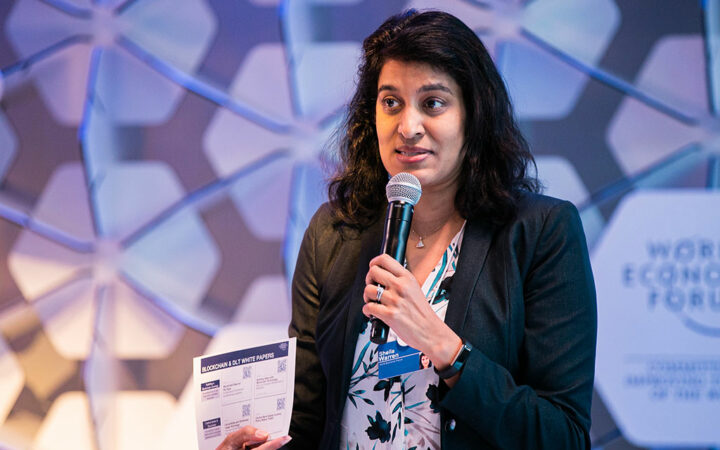
Please check out latest news, expert comments and industry insights from Coinspeaker's contributors.
Third-generation stablecoins are a novel breed of fixed-value crypto asset class.
 Edited by Julia Sakovich
Updated
6 mins read
Edited by Julia Sakovich
Updated
6 mins read

Stablecoins are a highly popular asset class and a prominent fixture in blockchain ecosystems. They plug the gap left by volatile cryptocurrencies, ushering price stability to all financial blockchain use cases. Hence, they take cryptocurrency benefits like cutting out intermediaries, low costs of indulging in finance, and financial inclusivity to the next level by making it efficient to store and transact value over blockchains.
While knowledge about their existence is widespread thanks to their ability to effect increased cryptocurrency adoption, the world is gearing up to witness the emergence of a new generation of stablecoins. The Davos protocol brings the third generation of stablecoins with its DAVOS stable asset. First, let’s look at its predecessors – the first and second generations of stablecoins.
The widely used stablecoins like USDT, USDC and DAI are some of the popular first-generation stablecoins. These crypto assets are backed by sufficient collateral to enable them to always maintain a fixed value.
USDT and USDC are pegged to the US Dollar, and each unit of either stablecoin is backed by 1 USD. There exist several other stablecoins pegged to various national currencies and commodities like gold, emulating their value.
DAI, on the other hand, is also pegged to the US Dollar but by differing means. Instead of using fiat currencies or commodities, it uses cryptocurrency collateral like ETH to maintain its peg. However, volatility associated with the likes of ETH and other cryptocurrencies can pose issues when their values start dipping. So, crypto-backed stablecoins are overcollateralized, preventing stablecoin providers from undergoing losses for the sum lent, and losing the peg maintained by their coins.
Nevertheless, the huge amount of collateral laid out by users to acquire such stablecoins lies locked within smart contracts, not gaining any returns. This breeds capital inefficiency, making over-collateralization of stablecoins a not-so-good investment. Furthermore, collateral like ETH and other Proof-of-Stake cryptocurrencies can be used for purposes like securing their networks.
In fact, capital inefficient over-collateralization is the reason why second-generation stablecoins, called algorithmic stablecoins, propped up into existence. Essentially, such stablecoins do not need any collateral – fiat or crypto. Instead, they maintain the peg using algorithms that link stablecoins to supporting cryptocurrencies.
For example, say the value of an algorithmic stablecoin must remain pegged to 1 USD but it increases. Users can burn 1 USD worth of its sister cryptocurrency to acquire the stablecoin.
By doing so, the stablecoin supply begins to get inflated. In the meantime, the coins can be sold off in the markets for their appreciated valuation. The process is known as arbitraging and is done until the stablecoin’s value falls back to the 1-dollar mark.
Inversely, when its value dips below 1 USD, arbitrageurs buy the stablecoin at its discounted rate and burn it to receive 1 USD worth of the supporting cryptocurrency. The burning continues, restricting the stablecoin supply until the value of the stablecoin gets back up to 1 USD.
But algorithmic stablecoins lack the strong footing possessed by collateralized stablecoins in terms of maintaining stability. The absence of collateral, reliance on arbitrageurs’ interest to indulge in buying and selling stablecoin pairs, and dependence on the value of the supporting tokens can be disastrous.
When the value of the supporting cryptocurrency starts falling, and holders lose confidence in the stablecoin peg, the assets experience a dumping frenzy leading to their de-pegging and their value tanking. In other words, the stablecoins end up losing their stability. The Terra ecosystem debacle was a prime example of how second-generation stablecoins are not as reliant as their collateralized counterparts.
The capital inefficiency brought about by first-generation stablecoins, and the stability issues perpetrated by second-generation ones make the need for a better stablecoin infrastructure evident. The solution to the present woes with stablecoins lies with third-generation stablecoins.
Third-generation stablecoins are a novel breed of fixed-value crypto asset class. Spearheaded by the likes of DAVOS, these stablecoins implement aspects from both their predecessors to bring DeFi users the best stablecoin experience. For instance, DAVOS is overcollateralized by MATIC to maintain a strong underlying value, preventing it from witnessing crashes that have been experienced by algorithmic stablecoins.
However, these stablecoins also integrate algorithmic features that help stabilize their value during minor price fluctuations arising from varying demands and market cycles. The algorithms alter borrowing rates and rewards, encouraging users to either lock or liquidate the supply.
Therefore, tokens get minted or burnt, respectively, affecting their supply and demand. With that, their price can be altered to the desired value which is the peg. Thus, third-generation stablecoins are backed by real value and protocols that ensure efficient price stability. The DAVOS stable asset is, therefore, a reliable store of value with strong fundamentals backing its makeup.
The benefits brought by the design of third-generation stablecoins do not stop there. For instance, the Davos protocol brings capital efficiency despite the over-collateralization needed to back the value of DAVOS tokens. Beyond the DAVOS stable asset, the Davos protocol brings an indigenous DeFi ecosystem allowing DAVOS holders to accrue yields greater than other stablecoin holders.
It does so by generating profits from different verticals. The protocol accepts Proof-of-Stake collateral like MATIC (and others like ETH soon) from DAVOS borrowers. The collateral gets staked in liquid staking protocols to generate profits. Additionally, it also generates profits from the fees paid by borrowers.
Now, those who borrow the DAVOS stablecoins can participate as liquidity providers in the platform’s liquidity pools. Here they can stake DAVOS, create liquidity for those looking to swap, and earn substantial returns in the range of 7% to 9% APY (Annual Percentage Yield). Liquidity provision rewards, which are a mixture of the platform’s liquid staking earnings and borrower interest, are handed out in DAVOS tokens to those staking and creating liquidity.
The combined incentivization offsets borrowing costs and offers sizable yields to users providing DAVOS liquidity. Additionally, the protocol’s model makes it worthwhile to stake the stablecoin even during times of market distress when DeFi yields remain dry throughout.
DAVOS is leading a new generation of stablecoins that make it possible for users to hold assets with dependable stability while simultaneously drawing significant yields. All that with risks as low as one can observe in traditional finance.
The underlying mechanisms adopted by the Davos protocol make it possible to bring a new class of stablecoins that are truly stable and capital efficient. Such solutions bring a lot of utility to the DeFi world, offering users a way to generate sustainable returns even during unfavorable market conditions.
Disclaimer: Coinspeaker is committed to providing unbiased and transparent reporting. This article aims to deliver accurate and timely information but should not be taken as financial or investment advice. Since market conditions can change rapidly, we encourage you to verify information on your own and consult with a professional before making any decisions based on this content.

Please check out latest news, expert comments and industry insights from Coinspeaker's contributors.





